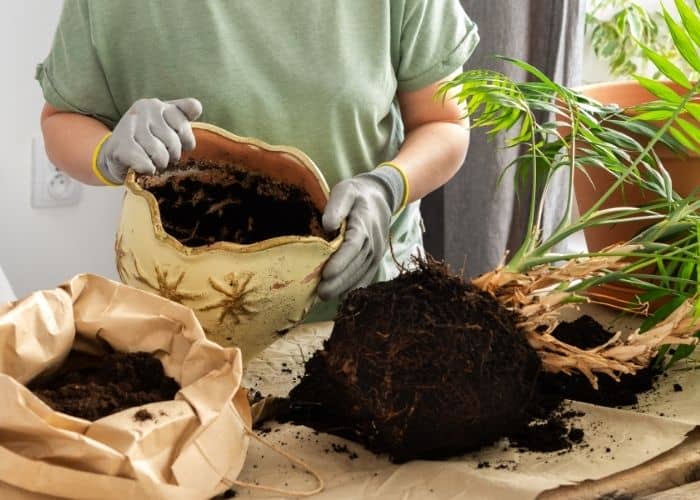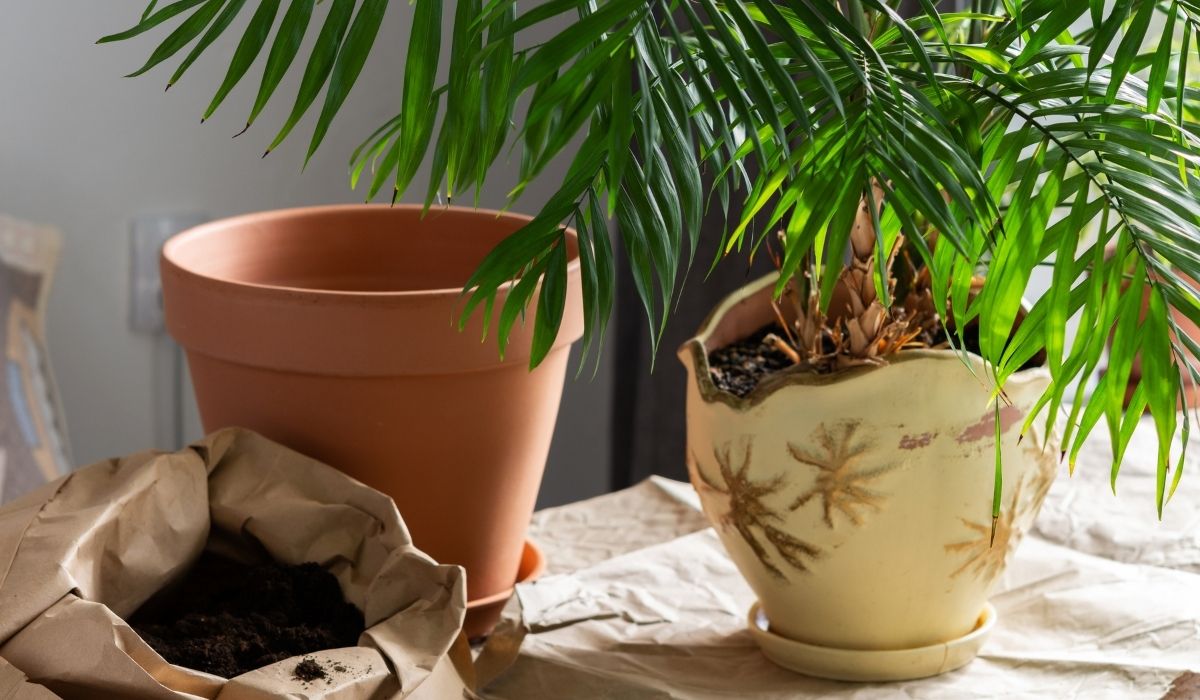In this blog post, we list the best soil for indoor palms. We give you information on what type of soil will work best with your indoor palms, how to prepare the soil for your plant, and various tips and hacks on growing healthy palms. A common mistake for people who want to keep their indoor palm plants healthy is to use the wrong soil to grow them.
Therefore we have gathered information to show you the importance of choosing the right type of soil for your indoor palms. So, if you are looking for the best soil for indoor palms, you have come to the right place! We are going to share information about the most recommended soil for indoor palms.
In order for indoor palms to thrive, soil testing is important. Taking into consideration the different climates they grow in, having nutrient-rich soil will keep your plants happy and enhance their growth. So, for the latest in plant care, indoor gardening ideas, and tips from professional gardeners, have a browse through this informative guide below.
What Is The Best Soil For Indoor Palms?
If you plant an indoor palm in poor soil, then you can expect to see leaves yellowing and dying pretty quickly. Therefore it is important to use soil that drains well and has sufficient organic matter in order for your indoor palms to grow. So, what is the best soil for indoor palms then?
Many people choose to grow indoor palm plants because it requires less maintenance than outdoor plants. Unfortunately, not all soil options are great for indoor palm plant growth.
The best soil to grow indoor palms includes a mixture of peat moss, vermiculite, and perlite. I love growing my palms indoors, but they are not very forgiving. They can easily damage with excess water, and their roots grow slowly. So it can take many months to see any growth if the correct soil mix is not used.
The best option is to use a mixture of peat moss, perlite, and vermiculite in the soil in which your palms are growing. This mixture will increase airflow around your plant roots and help them thrive. It also adds a bit of moisture to the air around your plants, which helps them stay healthy.
Read more about The Best Soil For Autoflowers
How To Plant Indoor Palms?
The first step to growing them is to use the best soil for indoor palms. Planting indoor palms is a simple process that requires a few vital steps in order for your plants to grow healthily. You need to select palm varieties based on how you prefer the palm’s growth characteristics.
Some varieties are slower growing than others but have much bigger trunks, while others grow faster with smaller trunks. Follow the steps below to successfully plant indoor palms.
– Plant them in a pot of about 1” (30 cm) deep and 4′ (5.2 m) wide. A large pot will allow you to plant more trees than a smaller one.
– Fill the pot with organic soil as palm plants thrive in rich soils.
– Water every day for a week, making sure it is well moistened at the bottom.
– After the first week of watering, continue to keep the soil moist by misting the pot, but do not let the soil get too wet.
– Make sure that the pots have sufficient exposure to sunlight for the first year. This will enhance the growth of palm plants.

How To Maintain Indoor Palm Plants?
The secret to maintaining indoor palm plants is not to water them too much after the first week of planting. Too much or too little water can have a negative impact on the growth of your plant. The best time to water is in the morning or late afternoon.
If your indoor palm plants are struggling to grow, it could be due to a lack of sunlight. You may have it planted too close to the window, or in an area where the sun doesn’t shine directly into the palm. Try moving or repositioning your indoor palm plant, so it gets direct sunlight for a few hours a day.
If your indoor palm plant is growing well, but you’d like it to bloom, then again, check that your plant is receiving the right amount of light. A bright, sunny location is ideal for an indoor palm plant to bloom. After blooming, the leaves will fall and be replaced by new ones.
If your indoor palm plant is struggling, simply take care of the leaves, trim the roots, and repot the palm plant when new leaves appear. Follow this link for more information on indoor palms.
What Are The Advantages And Disadvantages Of Growing Indoor Palms?
An indoor palm tree is an amazing addition to any home. They offer the same lush greenery as their tropical cousins and can grow in small spaces and thrive indoors. The trunks can be trimmed to make them appear as large outdoor trees. However, although they have their advantages, they also have disadvantages.
Listed below are the advantages and disadvantages of growing indoor palms:
Pros:
They are drought resistant.
They are disease resistant.
They are easy to grow.
They do not require much space.
They can be used for a variety of purposes, including decoration, shade, and windbreaks.
They can be planted from seed
They require little maintenance
Cons:
They require sufficient sunlight to thrive
They are quite slow-growing and can take 5 to 7 years before they start producing fruit
It is vital to use the best soil for indoor palms in order for them to grow well.
While some people might find them unruly and unsightly, they do offer a unique look to an indoor environment. If you are looking to add an element of nature to your home, these indoor palms may be the perfect choice for you.
Read more about Best Soil for Philodendron Brasil – A Gardeners Guide to Nutritional Planting
Conclusion
Soil is one of the most important factors when growing indoor palms. Using the best soil for indoor palms will enhance the health and growth of your plants. Indoor palms need sufficient sunlight and organic-rich soil that drains well in order to thrive.
A soil mix of peat moss, vermiculite, and perlite is best, and it is available in most local garden centers and nurseries, as well as at home improvement stores. It is also important to test the soil, which can be easily done by using soil testing kits. You should also enquire at your local nursery about the pH level in the soil type that you choose.
This is because the soil’s acidity and alkalinity are important factors to note when growing indoor palms. Therefore, it is of most importance that you choose the best potting soil for indoor palms, as shown in this article. Have a look at the 17 types of palm plants that are perfect for your home, plus care tips in this video.
[rank_math_rich_snippet id=”s-c6d6cb0c-87bd-4b32-accb-7a60b24d133b”]

